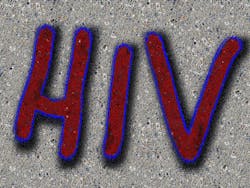Despite coordinated national efforts to implement HIV services, the epidemic persists, especially in the South. It also disproportionately impacts marginalized groups, such as Black/African American and Latinx communities, women, people who use drugs, men who have sex with men, and other sexual and gender minorities, according to a report published in The Lancet online as reported in a news release from the National Institutes of Health (NIH).
Following the release of the HIV National Strategic Plan, researchers, advocates, and other stakeholders reported on the HIV epidemic response in a compilation of articles in The Lancet, HIV in the USA Series.
Literature reviews, commentaries, and data analyses in the series outline recommendations to overcome barriers to implementing HIV services, such as counseling, testing, treatment, pre-exposure prophylaxis (PrEP).
These services are critical to preventing new HIV transmissions and helping people living with HIV achieve and maintain a "durably undetectable" viral load (the amount of HIV in the blood). Maintaining an undetectable viral load both preserves individual health and eliminates the risk of sexually transmitting the virus to others, a concept known as Undetectable = Untransmittable.
By leveraging these services and addressing structural barriers, the experts argued, the EHE goals remain attainable and important, even as the COVID-19 pandemic presents new challenges and exacerbates existing health disparities.
"Scientific advances have transformed the course of HIV in individuals. To transform the course of the epidemic, we need to expand care and prevention strategically to those who need it most," said NIDA Director Nora D. Volkow, MD. "That means taking a hard look at who has been excluded from services and take immediate steps to overcome systemic barriers like stigma, structural racism, and other forms of discrimination to connect hardly reached people – such as individuals with substance use disorders-with HIV testing, prevention, and treatment."
The series' authors recommend allocating resources to the areas and populations most hard-hit by the HIV epidemic, especially the U.S. South, where 52 percent of new HIV transmissions occurred in 2018 despite being home to only 37 percent of the U.S. population.
The authors explained that stark disparities in HIV outcomes also exist between certain age, racial, and ethnic groups, as well as between sexual and gender identities. While HIV diagnoses decreased overall and among white men who have sex with men between 2009 and 2018, new cases remained stable among Black/African American men who have sex with men and increased among young people aged 25-34 and Latino men who have sex with men. While Blacks/African Americans make up only about 13 percent of the U.S. population, they accounted for 43 percent of HIV-related deaths in 2018. Researchers suggested that culturally appropriate, tailored interventions may help communities respond to the unique needs of people in -- or at the intersections of -- these groups.

